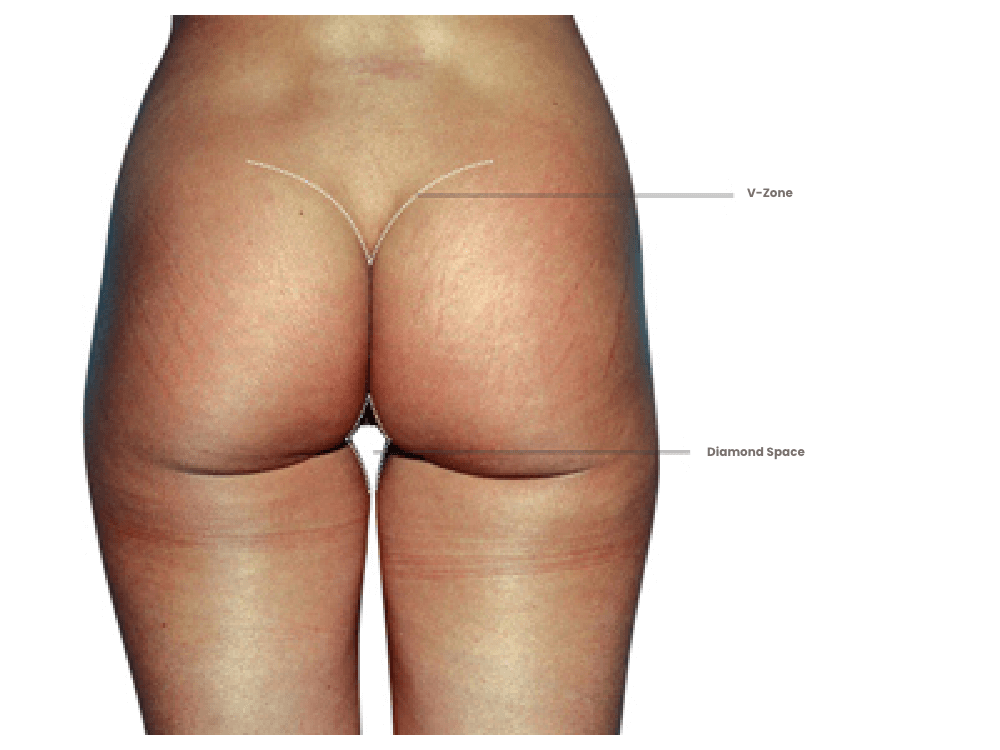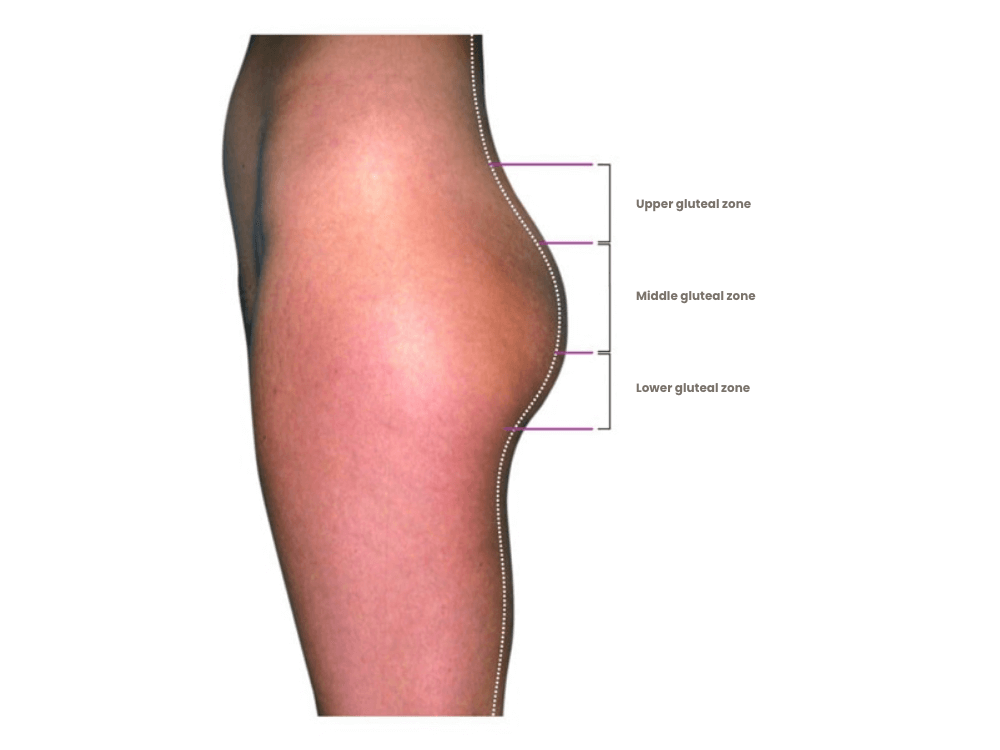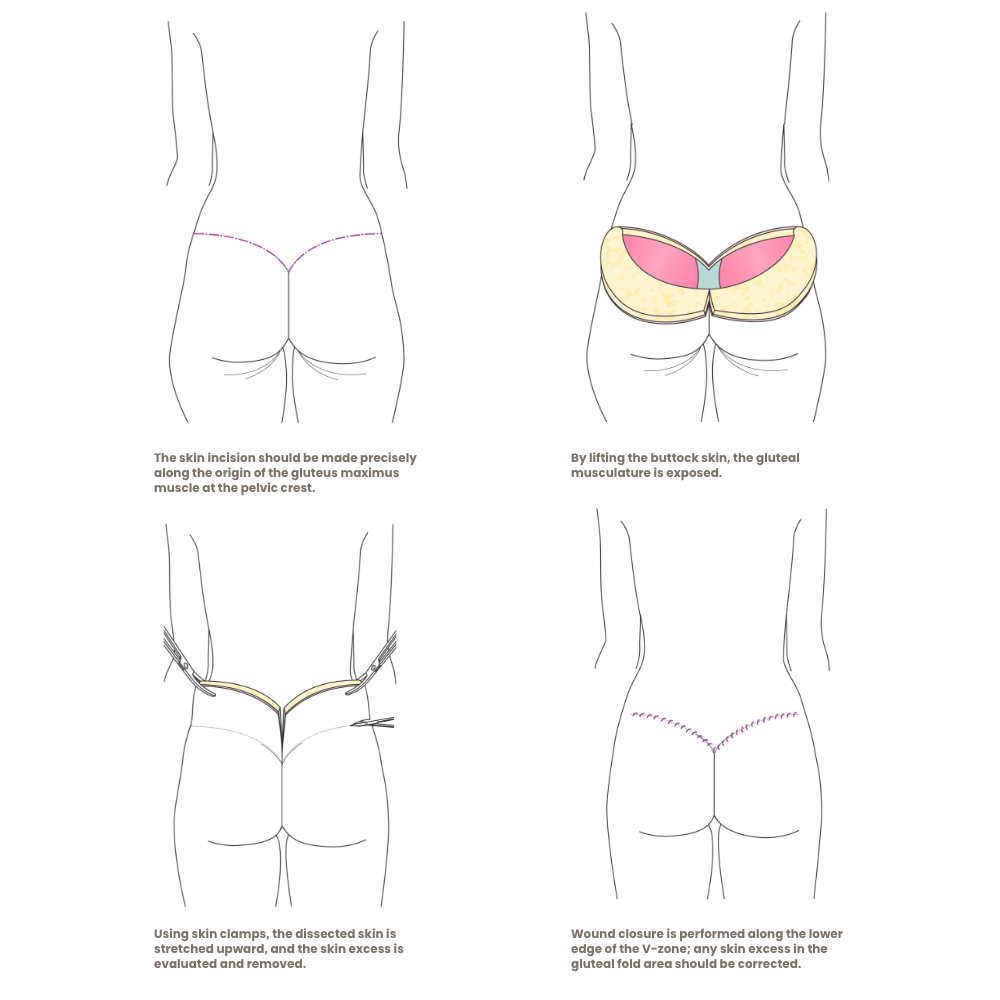A buttock lift is a complex procedure that requires thorough planning.
A buttock lift is not a rare procedure in aesthetic surgery, as the appearance of the buttocks holds great cultural significance in most societies.
For a successful correction of flattened or sagging buttocks, the surgeon must be familiar with the aesthetic norms of the gluteal region. The following three criteria are crucial for buttock aesthetics:
- even distribution of buttock volume
- well-defined V-zone
- beautifully shaped diamond space
If a vertical and a horizontal line are drawn through the center of the buttocks, four quadrants are created that, ideally, are approximately equal in size.


Buttock lift: details of the procedure
The gluteus maximus muscle accounts for about 80% of the buttock area and is the most important shape-defining component. Its origin at the iliac crest and the sacrum-coccyx region follows a long, curved course and forms, together with its counterpart, a large “V” — the so-called “V-zone.” The deeper the indentation it creates and the larger its surface area, the more aesthetically pleasing the buttocks appear.
The inner edge of the gluteus maximus runs downward and then curves outward, forming the gluteal fold. Ideally, the gluteal fold divides at two-thirds of its length, extending at a 45° angle downward toward the thigh and, together with the opposite fold, forms a diamond shape referred to in the literature as the “diamond space.”
The buttock lift is a technically refined procedure with little variation in surgical technique. After palpating the origin of the gluteus maximus, the skin is incised and lifted from the muscle fascia. The lifting distance determined before surgery corresponds to the amount of excess skin to be removed.
For a successful buttock lift, tightening alone is not sufficient — proper volume distribution is also essential for an aesthetically pleasing contour. Therefore, it is often necessary to add volume in the upper buttock area to improve the overall shape. This can be achieved through a dermal flap plasty (where the excess skin is folded inward rather than removed), autologous fat transfer, or silicone implants.








